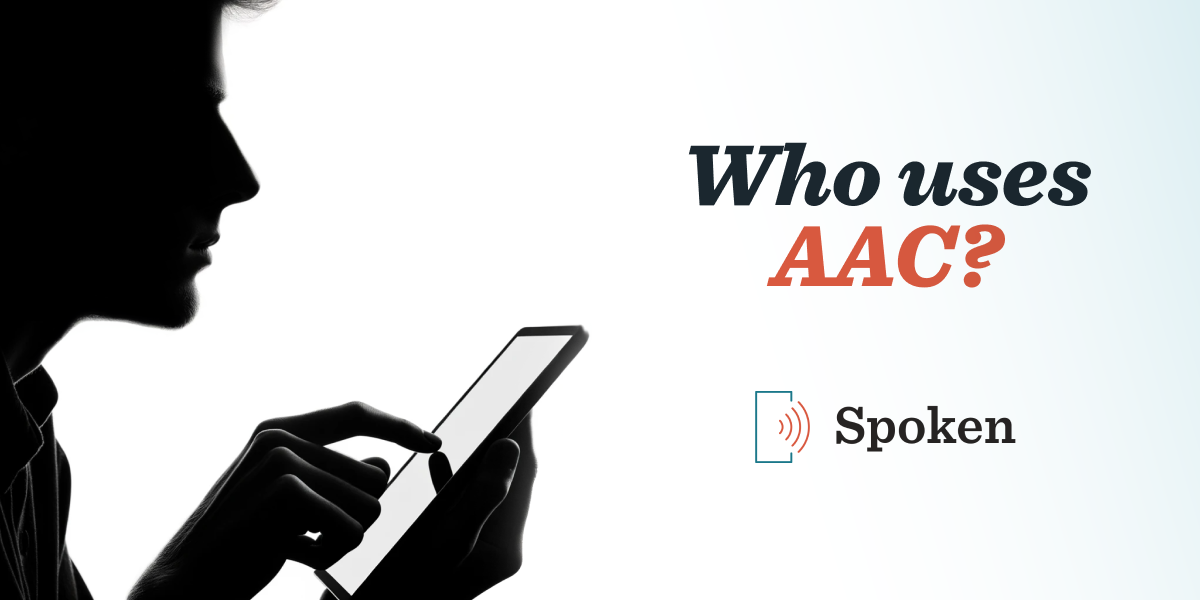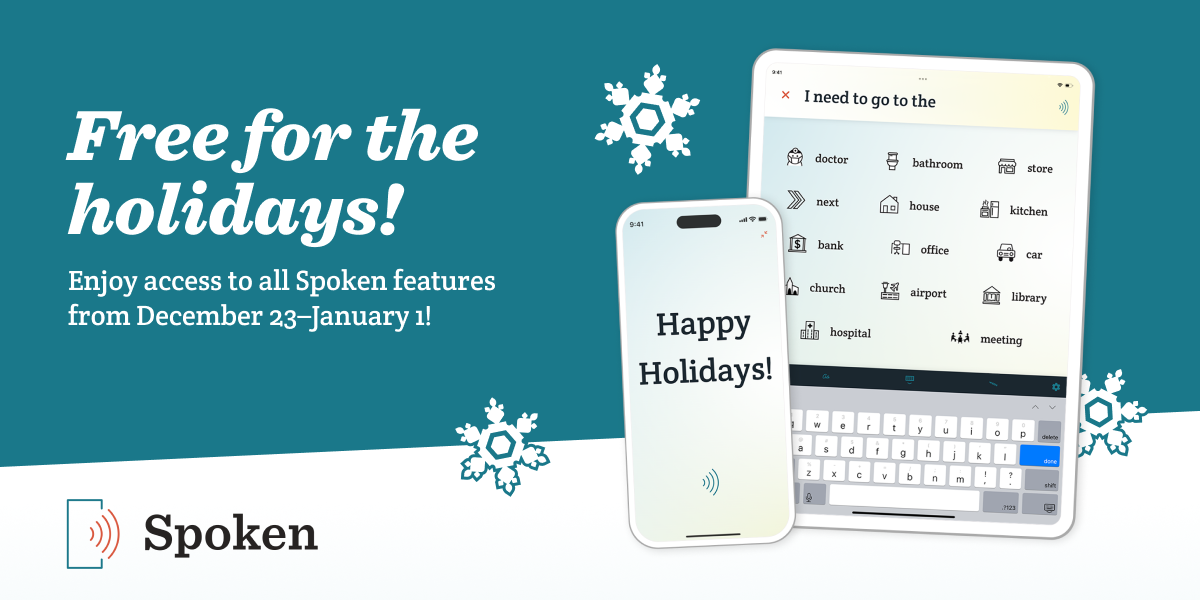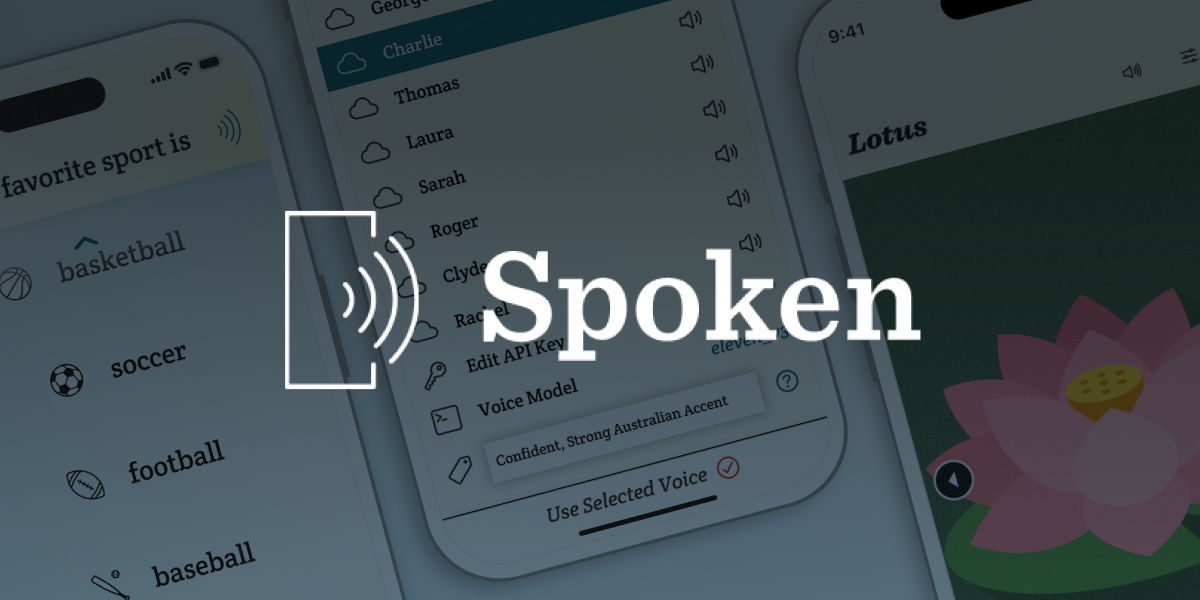Who Uses AAC? Expanding Our Understanding of Communication

It’s AAC Awareness Month, making it a great time to explore the frequently asked question, “Who uses AAC?”
Augmentative and Alternative Communication, or AAC, encompasses a variety of communication methods used to supplement or replace speech for those who struggle with verbal communication. As it turns out, this includes many diverse groups. In light of AAC Awareness Month, let’s take a closer look at these different groups of people and why AAC is such an important resource for them.
People Who Use AAC
Autism Spectrum
Many individuals on the autism spectrum are fully or partially nonverbal, meaning they lack or sometimes lose the ability to speak. For others on the spectrum, verbal communication is possible but may be physically taxing or simply less effective than using AAC. In one of our previous articles, “AAC Isn’t a Last Resort,” we explained this phenomenon more thoroughly and advocated for broader acceptance of AAC use. Check it out!
Much of the conversation about AAC focuses on autistic children, but it’s crucial to recognize that AAC is also commonly used by autistic adults. Still, AAC can be particularly beneficial for autistic children who are still developing their language and social skills. However, AAC often continues to be a useful tool as those same children enter into adulthood.
Other Developmental Disorders
It’s important to note that AAC can be equally beneficial for individuals with certain other developmental disorders, such as cerebral palsy. These tools can greatly aid in conveying basic needs, emotions, and thoughts, enriching social and emotional development across all life stages. For adults who have developmental disorders, AAC remains a vital communication resource. It can facilitate more complex interactions, such as those encountered in workplace settings or complex social dynamics. In this way, AAC adapts to meet the individual’s evolving needs, serving as a lifelong asset for communication and social engagement.
Speech and Language Disorders
Among those who frequently benefit from AAC, aphasia often stands out. It is an acquired condition, often resulting from stroke or brain injury, that can significantly affect one’s ability to speak, read, or write. AAC can help these individuals overcome their communication challenges. It offers alternative modes of communication, which can bypass damaged language centers in the brain. In addition to acting as a stand-alone communication system, AAC can be incorporated into speech and language therapy to support recovery. Moreover, its use can significantly enhance quality of life by enabling participation in social interactions and daily activities, reducing feelings of isolation and fostering connections with others.
Other speech and language disorders—such as stuttering, apraxia of speech, and dysarthria—also lead people to use AAC. These tools can either supplement verbal communication, offering a less strenuous way to express oneself at times, or serve as a complete replacement, depending on the individual’s needs and condition.
People with Neurodegenerative Diseases
Neurodegenerative diseases like ALS (Amyotrophic Lateral Sclerosis), MS (Multiple Sclerosis), and Parkinson’s Disease can progressively erode one’s motor abilities. This can lead to paralysis and a loss of speech. Fortunately, AAC devices typically require minimal movement and may even be capable of tracking eye gaze or head movement for word or phrase selection.
Cognitive Impairments
For those grappling with cognitive impairments caused by conditions like dementia or traumatic brain injury, AAC can offer a crucial form of support. Issues like memory loss, difficulty recalling words, or the challenge of forming coherent sentences can be partially mitigated through AAC. Features like pre-programmed phrases, picture boards, and word prediction can be helpful when these difficulties arise.
Surgeries and Temporary Conditions
Certain surgical procedures or medical treatments can prevent speech, either temporarily or permanently, necessitating the use of some form of AAC. Tracheostomies, for instance, involve creating an opening in the neck for direct access to the windpipe. The nature of this procedure often interferes with natural airflow, which is essential for vocal cord vibration and speech. While some individuals undergo tracheostomies for short-term medical issues and eventually recover their ability to speak, others may have tracheostomies for more extended periods, possibly permanently. Intubation for a ventilator is an example of a procedure that is temporary—we saw a spike of these during the COVID-19 pandemic.
AAC is also useful in other situations involving other temporary medical conditions that affect communication, such as throat infections. By offering a flexible and adaptable method for communication, AAC can significantly improve the patient experience during challenging times, whether it’s conversing with healthcare providers, expressing needs and preferences, or maintaining social connections when speech is compromised.
Anyone Else
There’s no reason to dictate who “should” or “shouldn’t” use AAC. Effective communication should take precedence over societal norms, empowering people to convey their thoughts and advocate for themselves in the manner they find most beneficial.
Rather than merely asking “Who uses AAC?” or “Who needs AAC?”, it may be more insightful to consider who could benefit from AAC. By understanding the diverse applications and users of AAC, we can help create a more inclusive environment where different methods of communication are recognized and valued.
About Spoken
Spoken is an app that helps people with aphasia, nonverbal autism, and other speech and language disorders.


